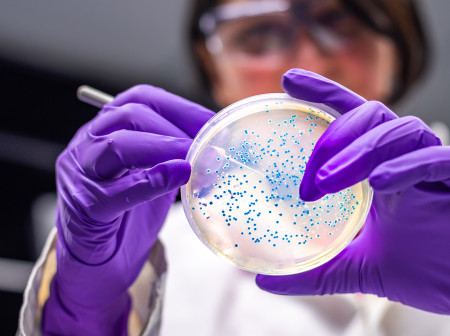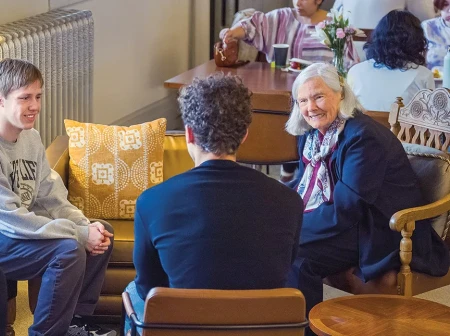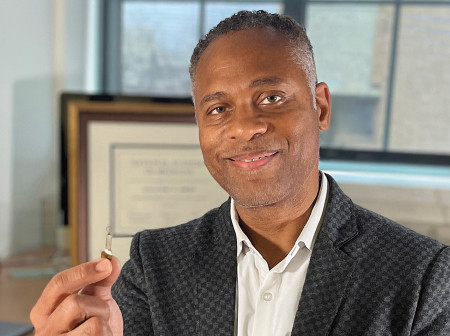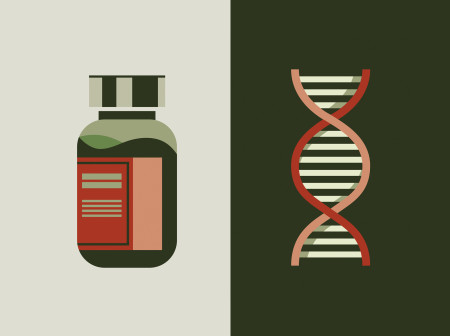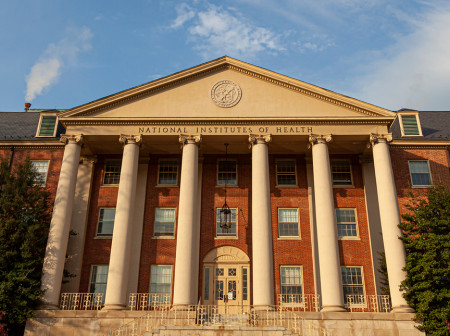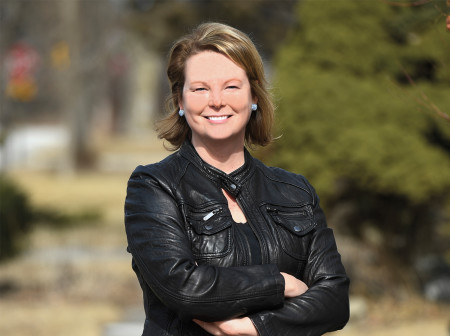Health & Science
Across engineering, medicine, communications technology and more, faculty share why conducting basic science research is fundamentally important, opening paths to medical breakthroughs and innovation.
Since 2015, the Roberta Buffett Institute for Global Affairs has opened new vistas for international research and teaching.
Northwestern computer scientist and artificial intelligence pioneer Kris Hammond has dedicated his career to studying and developing AI tools. He approaches AI with cautious optimism that it can be our partner — not replacement — in a new information age.
Made possible by a generous gift from University Trustee Kimberly K. Querrey, the new Querrey Simpson Institute for Regenerative Engineering at Northwestern will help accelerate patient recoveries and develop bioengineered tissues and organs.
Interdisciplinary teams of Northwestern scholars are working tirelessly every day on the foundational science that could help us live longer and healthier lives in a cleaner, more sustainable world. They ask big questions, follow their instincts and analyze data to solve tough problems and turn bold ideas into real solutions.
Northwestern scientists have developed a therapy that combats the progression of neurodegenerative diseases by effectively trapping toxic proteins before they can aggregate into nanofibers that kill neurons. Led by professor Sam Stupp ’77 PhD, the therapy holds promise for Alzheimer’s disease and ALS, or Lou Gehrig’s disease.
Tiffany Chen ’18 MS, who worked at the National Institute of Dental and Craniofacial Research, shares her thoughts on the elimination of public health communications departments at a time when she believes trusted voices in public health are needed most.
Studies show that friendships have real, tangible health benefits. Northwestern experts offer advice on how to make more friends and why these relationships are more important now than ever before.
Fresh guacamole and veggie garlic noodles are just two of the many dishes Northwestern students have taught local youth how to make as part of MiniChefz, a Northwestern student organization that provides nutrition education to elementary and middle school students from disadvantaged backgrounds.
As an undergrad, Julia Starzyk Kersey ’99 raised money for the American Heart Association through Radiothon, an annual fundraising event in honor of an undergraduate student who died of cardiac arrhythmia. Kersey carries campus tradition with her today as a national marketing and communications director for the American Heart Association.
